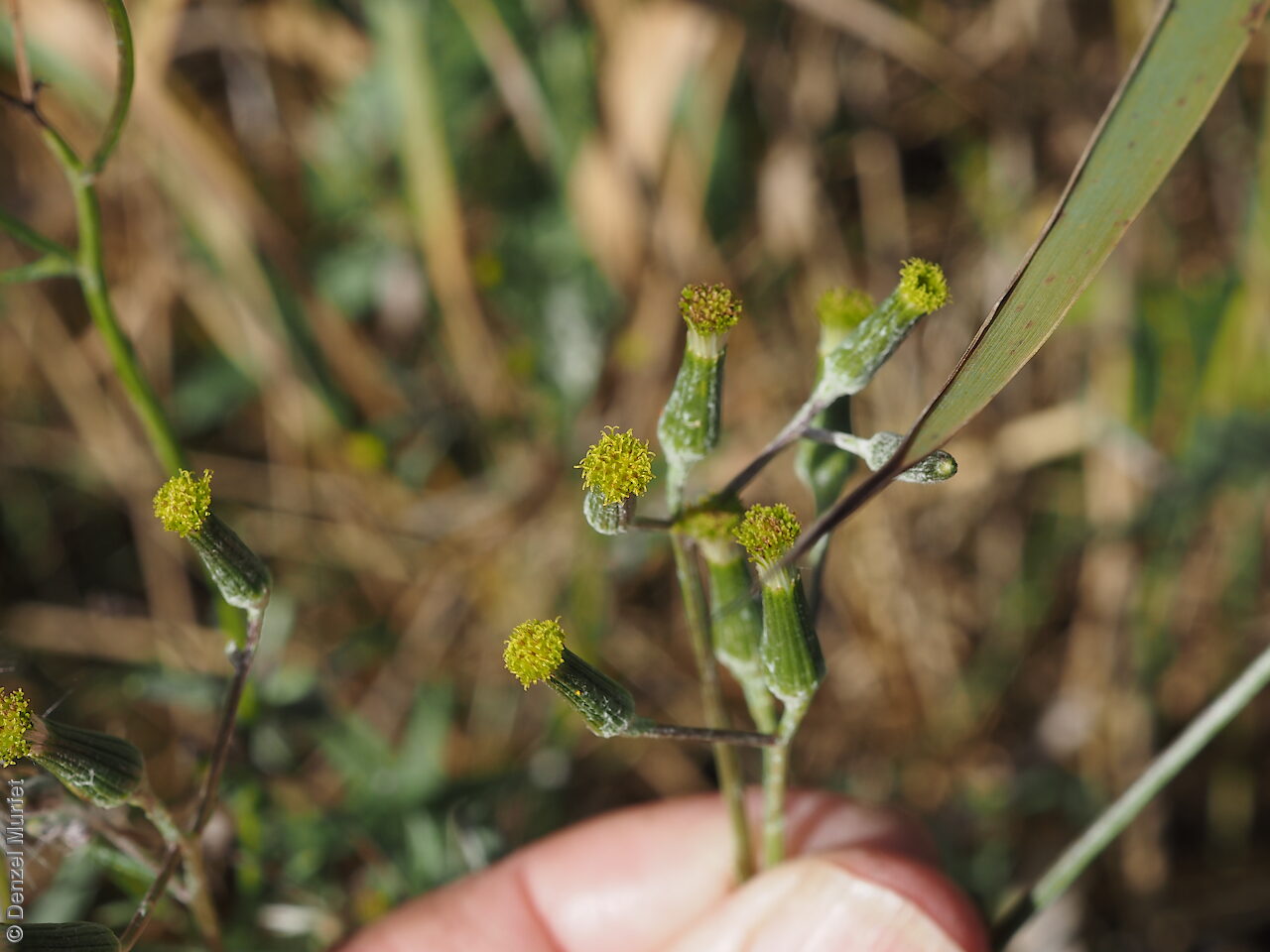














Common names
Riverina Fireweed
Etymology
Senecio from the Latin 'senex' meaning an old man, referring to the white pappus attached to the seed. Longicollaris from the Latin 'longus' meaning long and 'collaris' meaning of the neck, referring to the long-necked achenes.
Distribution and status
Found along the Murray River and Lake Alexandrina in South Australia, growing in floodplains and edge of rivers. Also found in Queensland, New South Wales and Victoria. Native. Very rare in South Australia. Very rare in the other states.
Herbarium regions: Murray, Southern Lofty
AVH map: SA distribution map (external link)
Plant description
Erect herb to 1.8 m high with fleshy roods. Leaves in middle third of stems evenly spaced and sized, very narrow elliptic, 8�24 cm long, denticulate, upper surface sparsely appressed-cottony, glabrescent, lower surface green, with sparse to moderate coarse hairs. Inflorescence corymbose with 30�100 yellow rayless daisy flower. Flowers throughout the year but mostly between September and February. Fruits are large fluffy daisy-head with exposed white pappus. Achenes 4�6 mm long, brown; pappus 6�7 mm long. Seeds are brown cylindrical seed to 6 mm long and 0.4 mm wide, dilated at one end and tapering to a slender neck at the other, with scattered hairs along the ridges and long pappus. Seed embryo type is spatulate fully developed.
Seed collection and propagation
Collect seeds between November and April. Collect heads that are large and fluffy. Either pick off the whole heads or use your finger and pull off the seeds from the head. Mature seeds will come off easily. Place the heads in a tray for a week to dry. No cleaning is required if only pure seeds are collected. If heads are collected, then rub the heads gently with your hands to dislodge the seeds. Viable seeds will be fat and hard. Store the seeds with a desiccant such as dried silica beads or dry rice, in an air tight container in a cool and dry place. From four collections, the seed viability were average to high, ranging from 79% to 92%.
| Location | No. of seeds (weight grams) | Number of plants | Date collected | Collection number Collection location | Date stored | % Viability | Storage temperature |
|---|---|---|---|---|---|---|---|
| MSB | 7,150 (3.36 g) | 50+ | 1-Dec-2006 | RJB70709 Murray | |||
| BGA | 3,600 (0.7 g) | 20 | 20-Nov-2007 | RJB76150 Murray | 19-Sep-2008 | 90% | -18°C |
| BGA | 5,600 (1.85 g) | 100+ | 3-Apr-2012 | DJD2361 Murray | 1-Nov-2012 | 92% | +5°C, -18°C |
| BGA | 2,350 (0.41 g) | 50+ | 24-Feb-2012 | MJT378 Murray | 1-Nov-2012 | 79% | -18°C |
Number of plants: This is the number of plants from which the seeds were collected.
Collection location: The Herbarium of South Australia's region name.
% Viability: Percentage of filled healthy seeds determined by a cut test or x-ray.